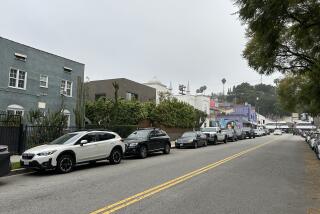Lakewood’s history
- Share via
Re “John Sanford Todd, 1919 - 2008,” obituary, Sept. 4
In The Times’ obituary on John Sanford Todd, the architect of the Lakewood Plan, historian D. J. Waldie argues that the incorporation of Lakewood, which contained mostly white residents, was motivated more by age and class than by racial identification.
According to my research in the Loren Miller papers at the Huntington Library, this was not the case in the early subdivision of the community. In April 1950, Los Angeles County authorities purchased a parcel of land in Lakewood for a civic center. One provision in the deed to the land stated that “neither the whole, nor any part of said property ... shall ever at any time be tenanted, used or occupied ... by any person not of the white or Caucasian race
Shortly afterward, local NAACP attorneys Edward Maddox and Loren Miller severely criticized the county for giving “sanction to discriminatory agreements” and complained that developers “refused to sell, lease or rent any property in Lakewood to Mexicans, Negroes or Orientals, whether veteran or non-veteran.”
The county’s action and Maddox and Miller’s criticism are striking evidence that racial exclusion contributed greatly to the development and incorporation of Lakewood in the 1950s.
Martin Schiesl
Mission Viejo
The writer is a professor emeritus of history at Cal State L.A.
More to Read
Sign up for Essential California
The most important California stories and recommendations in your inbox every morning.
You may occasionally receive promotional content from the Los Angeles Times.










